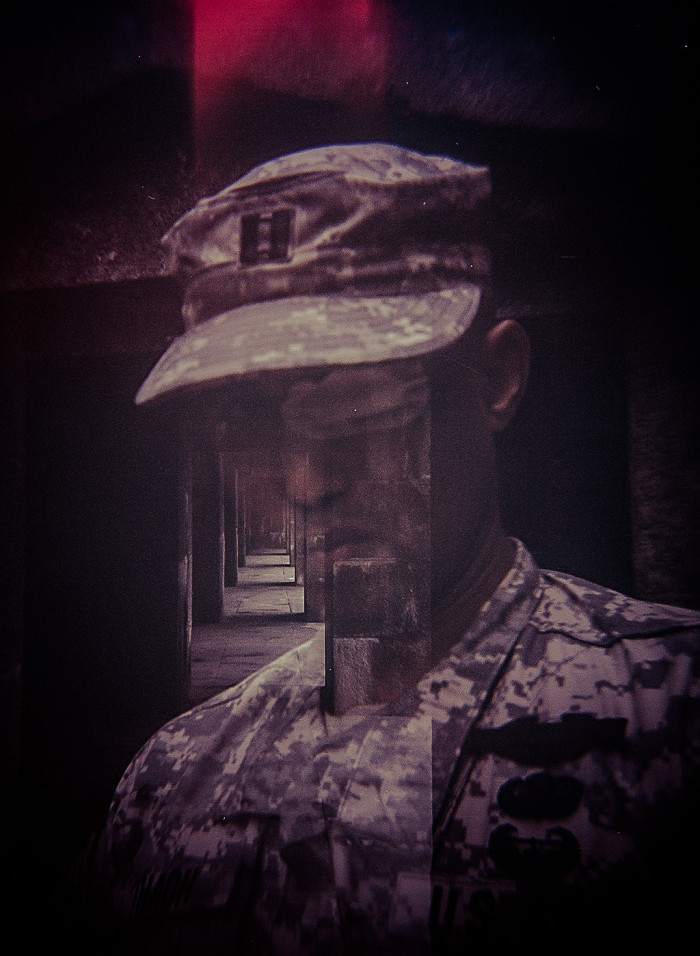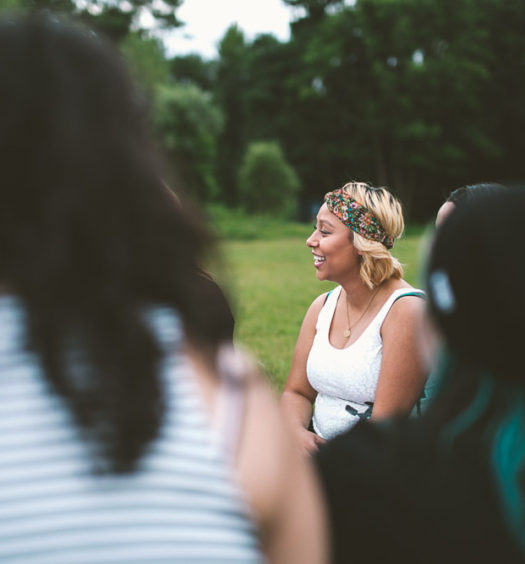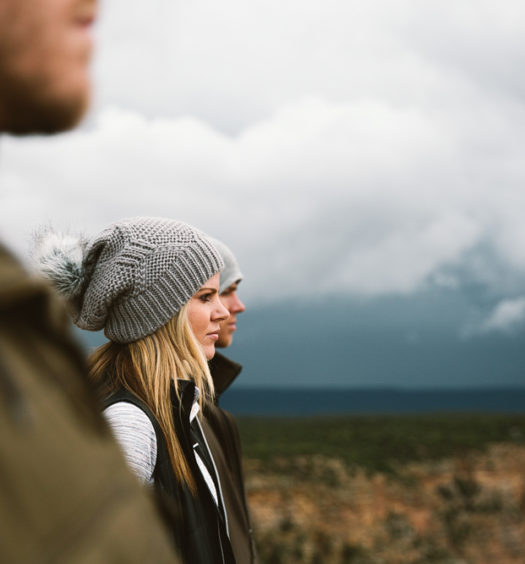Discovering Hope Through The Lens Of A Camera
 The Hope Is Project, founded by Sarah Takako Skinner and Marc Raco, was created to show “what hope looks like through the eyes of the struggling, those who are fighting, the abandoned, forgotten and discriminated against”.
The Hope Is Project, founded by Sarah Takako Skinner and Marc Raco, was created to show “what hope looks like through the eyes of the struggling, those who are fighting, the abandoned, forgotten and discriminated against”.
You could say, it was meant to be when Sarah and Marc united for this project, as Marc mentioned in his interview, quoting Rocky: “She’s got gaps. I got gaps. Together, we fill gaps.” Sarah’s creative talent in photography matched with Marc’s background in photography, storytelling, filmmaking and sales, brings about a beautiful artful project that has the potential to inspire the masses to find hope, daily.
For this reason, The Hope Is Project excites me, as it inspires people to capture hope through the lens of a camera, which to their surprise, just through the simple act of searching and photographing hope, actually leads to more of it.
This is their story…
The “Holga” camera captures images in an unusual way. In a way in which only she can, Takako puts this camera in the hands of people with compelling stories of adversity and hope—outcasts, the terminally ill, the incarcerated, the heroes, the homeless and hungry, the very young, the very old—and asks them to capture images which look like hope to them. Takako documents this process using her own lens, and the larger picture and background story on video.
The compelling experiment and story becomes a once-in-a-lifetime view into the human spirit through the unique stories and striking similarities of numerous participants from various cultures. They share one thing: a need to hope.
Sarah Takako Skinner: The Hope Is Project is about the search for Hope. What does Hope look like through the eyes of the struggling, for those who are fighting, the abandoned, forgotten and discriminated against? I ask them to capture what Hope is to them with the Holga camera. How does a person show what hope looks like through the metaphor of pictures. How do people perceive images knowing that each ‘photographer’ spent time searching and creating, even when dealing with their issues? We all have traumas. This is more than an art project—it’s personal research. Does the search for Hope bring about more Hope?
When I met Sarah in early 2014, I was captivated by her project and the potential it had to impact an unlimited number of people in a profound and lasting way. Dostoevsky stated “To live without Hope is to cease to live.” I felt this project was the “big one,” the kind of idea that comes only once in a while, and all it needed was action, allies and a plan. It was tinder waiting to be ignited if the right flame materialized, and she was seeking that flame. I believe the universal nature and appeal of hope, and the power that inspiring hope in others by shining a unique light on its power and a creative way to make it accessible, can be something amazing, important and truly life changing for both of us and those we feature. Sarah had carried it so far, and needed others to give the project momentum. She reached out for help to create a concept video for the project and I happened to have the skills necessary, and was willing to help for free. I volunteered. The video was so well aligned with her vision (ultimately it actually won a 2015 Communicator Award for Innovative and Experimental Online Videos from the Academy of Interactive and Visual Arts) it led to more and more collaboration. In the movie “Rocky”, Sylvester Stallone’s character talks about his relationship with Adrian. “She’s got gaps, I got gaps, together we fill gaps.” I often reflect on this line, as Sarah and I each brought something to the table—she has a vision, the exceptional photography and creative skills, and created the concept, and I have the production, filmmaking, sales and entrepreneurial abilities. Together we found we make a good team, and officially partnered in 2015.
Based on the reaction of many people to the concept of the project and the work they’ve seen thus far, I know at a minimum we will inspire and impact many people even if the project only goes so far. We believe The Hope Is Project has the very real potential to morph into something wide and important which effects meaningful change and motivates many to see hope as accessible. Our own hope centers on that this project will have perpetual life, unlimited scope and that the art, imagery and imagination of the project will be something meaningful we both will leave behind, making our lives richer and really count for something, and others will be motivated to keep the concept alive. After all, it is a magical thing to have art intertwine with purpose and meaning. Jim Henson said “ My hope is to leave the world a little better for having been there.” In a way, maybe our own hopes for an artful life with immeasurable purpose and meaning are what really propel this project.
Combining art, discovery, and innovation, the Hope Is Project invites the world to catch a glimpse of hope and ask the question—can the search for hope itself inspire that very hope?
The purposeful search for hope is a movement in motion, captured at the speed of a shutter.
Growing up with body shame and inner anger issues then moving into adulthood I began to wonder what would make a baby, with no inherent knowledge of life, want to come into this world under such dire conditions. I began to question—did I choose to live or did technology force me to?
Or was it purely instinct or something deeper, more complex. Yes, medical technology is a powerful tool, and in my belief, not stronger than the soul. So what was that key component that set the balance to favor life, despite medical technology and my horrific beginnings.
What soul would choose life if the first few months were needles, knives, restraints, grown ups in lab coats cutting you open numerous times in a sterile florescent environment?
As a young adult I began to ponder the question of Hope and if it was inherent in us all. To me it seemed hope could only come from knowledge of past and future, so there was no way a newborn could hope—or could I?
But with six other babies in my region that year born with the same defect and only two of us survived, then instinct and medical technology didn’t do the them any favors—so could it be more than this?
What outside forces played a role in my survival? I know my parents prayed a lot for me, as did their friends and family. I know hope gushed from my parents core-being to see me fight to live. I know the doctors and nurses worked day and night to watch over me, pouring their energy and hope that I would make it through. Was there something to this external force of hope outside of my being that was the deciding factor, and if that was a possibility—how strong is it? How strong is hope and what does it look like?
Without love a person still goes on living, but without hope one dies.
When I was a photography student in college I explored some of these questions and realized how vital it was for me to keep going. That is when the Hope Is Project really became profound and a necessary tool for me as an artist searching for answers I did not have. Every choice I make and even my style of photography has been influenced by my entrance into this world and the questions that have come from it. Without this project, I would not have a tangible way of pursuing these burning, life-long questions in the manner that I do.
In addition, I found that the people who participate in the project also discover many things about him/her self and have stated that the act of looking, photographing and reflecting on hope has brought positive changes in their life. The fact that I know I am giving someone a chance to show us their hope makes me feel really good, as a person and artist.
“Participating in the Hope Is Project has been rewarding because I have used positive engagement with the Hope Is project team to build on my inner core which makes me stronger to continue my mission in saving Veterans lives which is priceless!”
In my opinion, the search for hope creates more hope, because of the engagement of looking into myself and gaining more strength it has empowered me to not stop until I can do all that I can to help my fellow Veterans that are in crisis of suicide to save their lives for their family and our country.
My thoughts is that the Hope Is project needs to be funded and replicated throughout our country and world especially in areas in our own nation that has difficulties in showing children and young adults that they must empower their anger or disadvantages that would bring honor to themselves, their community, our nation and humanity even though at times injustice does happen, we must have faith in the rule of law and our elected officials. I am and many Veterans are living with numerous injuries and our fellow Veterans have sacrificed their lives for our country, it is the duty of our government to honor that heavy burden by acting diligently and fair to enforce the law.
I took the photos of what I perceive to be Hope because I was picturing in my mind what I saw when looking into my military brothers and sisters eyes to help them cope with their suicidal inclinations to take their life and pull that negativity within me and destroy it with my inner core to use it positively.”
– Captain James Van Thach
What would happen if a startup entrepreneur ritually sought out a story every day about one successful startup, simply for inspiration? Could that flow of positivity and possibility be enough fuel to keep the engine of hope running?
What if the new family purposefully centered many of their family activities around things which had purpose and meaning, instead of time wasting of no actual consequence? Would surrounding themselves with others who find meaning in their lives be infectious in the most wonderful of ways?
What if everyone took time to take a photo—with their camera or cellphone or even just their own eyes—of at least one thing that embodies hope each day? Could this become a habit? Could this actually change the way we think if each day has at least one moment of hope in it?
Hope might just be wherever we look for it. It’s the looking that is often missing.
Sarah Takako Skinner: As a photographer I am always on the search for Hope. When I walk down the street I look for stories and faces that bring compassion to my heart. Even without a camera in hand, this daily practice has opened my heart to being of service to those around me. May it be I stop and talk with homeless and really hearing his/her story so I can give them something they actually need, helping an elderly carry her groceries to her door step in Harlem, an elderly man cross the street and get to the grocery store safely, saving a baby bird that had fallen from the nest in Brooklyn, to sitting for hours talking in earnest to the local gang member of their life and bringing tears to both our eyes at 4am. As much as a photographer as I am, I am more a humanist and most of the pictures still live in my mind, as cameras are often not appropriate in many situations I have lived in my life.
The practice of being observant with an open heart brings me ample opportunities to help and bring hope, which in turn bring me hope. My life is rich of these stories, and I believe influences how I photograph the portraits I do. When I have a deep love for humanity and the desire to give back, my life becomes abundant with adventure, wonderment and connection—thereby giving me the feeling of truly being Alive.
I think the act of looking for hope is a huge part of bringing it into your life. What happens if everyday you challenged yourself to take your phone or camera and photograph three images that you saw brought you hope? What if you or your family made a book of all the images taken in a span of 3 months, then printed them into a small book to hand out to friends, family or even strangers? What if you did a 30 day challenge of doing 30 acts of kindness that brought another person Hope and photographing one picture from each act—uploading them to Instagram and other social media with #Hope and ask your friends to do the same? There are so many ways of using the camera to act as a third eye to give and receive hope.
I believe one of the most effective ways to find hope in your daily life is to give and be of service. I found by doing small acts of service or giving back brings an instant feeling of connection, love and hope. I understand that we get so busy in our daily lives that we stop seeing ways to connect to humanity. The point is to take a moment and ask, “How can I help right now, how can I give back, how can I bring a smile to someone’s day?” That moment when you want to walk through the door and not hold it open because you are in a hurry—is the time when you need to pause, keep the door open and wait as that grandma makes her way slowly through with a big smile of appreciation…it’s that smile that let’s me know ‘I’m getting it right’.
LEARN + CONNECT
Learn more about The Hope Is Project
Connect via Facebook, Twitter and Instagram
FROM THE EDITOR
At Conscious, we are inspired by remarkable people and organizations and so we set out to tell stories that highlight human interests, global initiatives, innovation, community development and social impact. You can read more stories like this when you subscribe.




